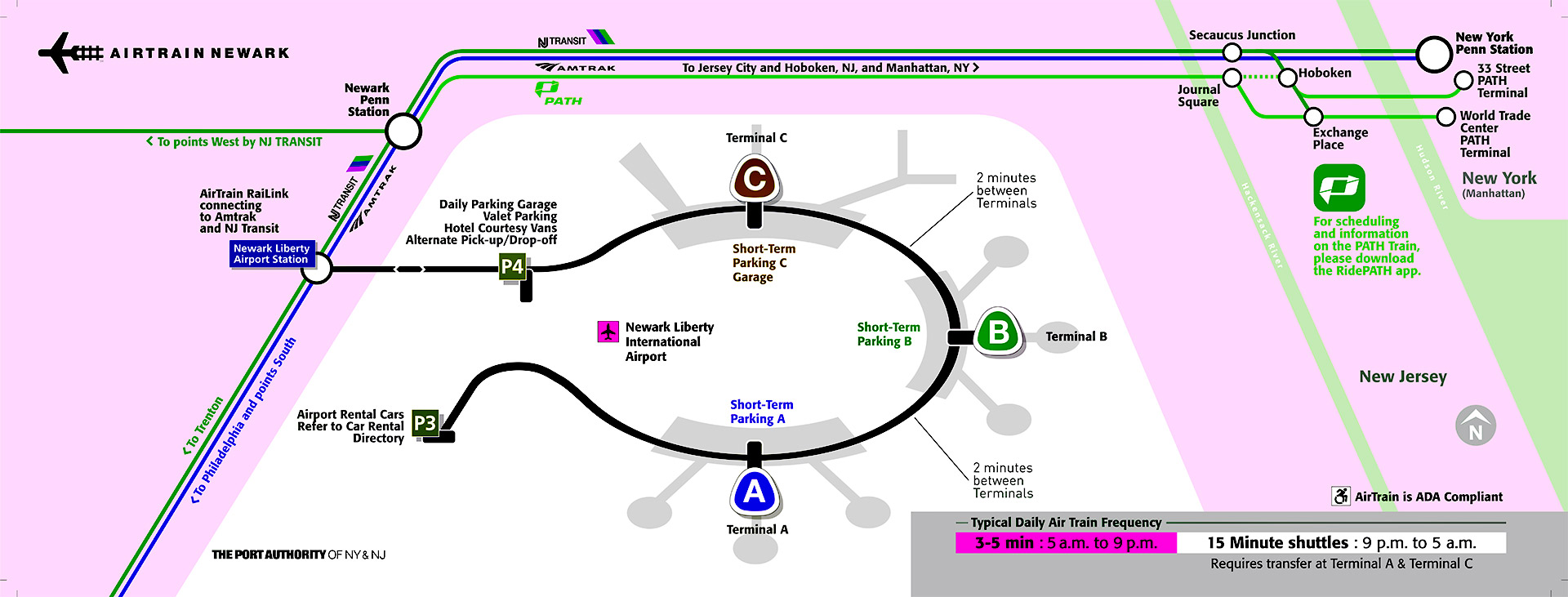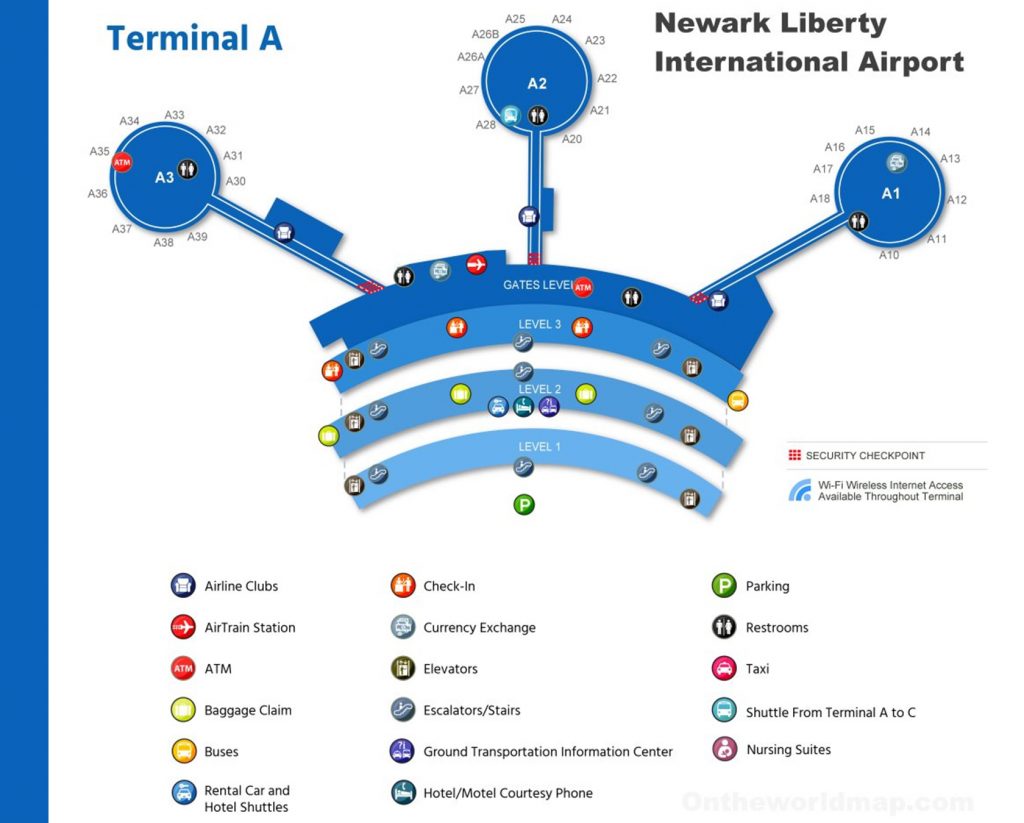EWR Airport: What Does EWR Stand For? + More Insights
Ever wondered about the seemingly cryptic letters that represent airports worldwide? Specifically, the three letters "EWR" unlock the identity of a major international gateway, and the story behind it is more than just a simple abbreviation.
The world of aviation is steeped in its own unique vocabulary, a language of codes and acronyms that streamline operations and facilitate global travel. Among the most recognizable of these are the three-letter airport codes, assigned by the International Air Transport Association (IATA). These codes are essential for identifying airports in flight schedules, baggage tags, and all forms of communication within the aviation industry. But how do these codes come to be? And what secrets do they hold?
In the case of Newark Liberty International Airport, serving the New York metropolitan area, the code "EWR" is far from arbitrary. While some might speculate it stands for "East/West Routes," the actual origin is rooted in the airport's history and its location. As the aviation landscape evolved and the need for more comprehensive identification grew, the system transitioned from two-letter to three-letter codes. During this transition, the United States Navy claimed all codes beginning with the letter "N." This left a void, necessitating a different approach for airports across the nation.
- Joey Graziadei Age Bachelor Facts What You Need To Know
- Inside Genpop What It Means In Prison Daily Life
The solution for Newark Liberty International Airport was elegant in its simplicity. The code "EWR" is derived directly from the airport's original name: Newark Metropolitan Airport. This method ensured a unique identifier while also honoring the airport's origins. The airport, a bustling hub for both domestic and international flights, straddles the boundary between the cities of Newark in Essex County and Elizabeth in Union County, New Jersey, a fact which further contextualizes its unique identifier.
Newark Liberty International Airport (IATA: EWR, FAA LID: KEWR) is, indeed, a major international airport. Its a significant gateway to the New York metropolitan area, offering a wide array of flights to destinations around the globe. Located approximately 15 miles (24 km) southwest of Midtown Manhattan, it serves as a vital link for travelers seeking to access the heart of New York City and its surrounding areas. Despite its proximity to the bustling metropolis, EWR is located in New Jersey, not New York. This sometimes causes confusion, especially for those less familiar with the geography of the region. Nevertheless, the airport plays a crucial role in the transport infrastructure for the New York area, serving as a crucial arrival and departure point for millions of passengers each year. The airport's strategic location offers convenient access to both the city and the broader region, further cementing its importance as a key transportation hub.
Newark Airport has three primary terminals A, B, and C each designed to handle the flow of passengers and facilitate efficient operations. Travelers should familiarize themselves with these terminals when planning their journeys, as they host different airlines and offer various amenities, from dining options to shopping experiences.
- Greg Gutfeld Julie Banderas Marriage Divorce News Whats Up
- Kelly Preston Movies Career Life Latest Updates News
The story of the airport codes is a testament to the evolution of air travel and the constant quest for efficiency and clarity. From the necessity of unique identifiers to the ingenious solutions employed in creating these codes, each letter tells a story, reflecting the history and location of the airport it represents. Understanding these codes is not just for aviation professionals; it enriches the experience of any traveler and provides a fascinating glimpse into the inner workings of the world of flight.
Dubai International Airport, which opened in 1960, offers an interesting parallel. The airport code "DUB" was already in use by Dublin. To create a unique code, Dubai substituted an "X" for the "U," resulting in the code "DXB." This adaptation demonstrates the flexibility and resourcefulness required in the aviation industry. These codes must be unique, easy to remember, and reflect the airports unique identity within the global aviation system.
Newark Liberty International Airport (EWR) continues to be a vital component in global air travel, connecting people from across the globe. EWR's central place in the New York metropolitan area's air transport network ensures it will continue to play a crucial role in the travel experience for years to come. The airports legacy, its codes, and the story behind them are a reminder that aviation is not just about the destination; its about the journey and all the intricate details that make the world of flight a marvel of human ingenuity.
| Aspect | Details |
|---|---|
| Full Name | Newark Liberty International Airport |
| IATA Code | EWR |
| FAA LID | KEWR |
| Location | Newark and Elizabeth, New Jersey, USA |
| Distance from Manhattan | Approximately 17.3 miles (27.8 km) |
| Terminals | Terminals A, B, and C |
| Original Name | Newark Metropolitan Airport |
| Historical Names | Newark Metropolitan Airport, Newark International Airport |
| Served Areas | New York Metropolitan Area |
| Primary Function | Major international and domestic airport |
| Proximity to Other Cities | Approximately 60 miles (97 km) northeast of Philadelphia |
| Security Wait Times | TSA Precheck available to reduce wait times. |
| Airport codes origins | EWR comprises the three letters from Newark as all codes that start with N are used by the navy. |
| Official Website | FAA Airport Information |
![Newark Liberty International Airport [EWR] Terminal Guide [2022]](https://upgradedpoints.com/wp-content/uploads/2019/07/Newark-Liberty-International-Airport-Terminal-B-e1562920237905.jpg)
Newark Liberty International Airport [EWR] Terminal Guide [2022]

AirTrain Newark Liberty International Airport EWR

Terminal A Map Newark Liberty International Airport (EWR)